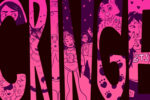Regardless of whether your art is visual, vocal, written or performance-based, anyone who creates is familiar with artist’s block. You may stumble through the week hoping that inspiration will strike by your next deadline, but in reality, sometimes it doesn’t. As someone who is all too familiar with struggling to overcome artist’s block, these are a few strategies that have helped me at my worst moments.
1. Zone out and go from there
It sounds ridiculous and wildly counterintuitive, I’m well aware. But if you take the time to sit back and allow your mind to wander, you’re bound to gravitate toward interesting topics that could morph into your next project. An important part of this approach is making sure that you’re in a space where you feel comfortable and safe, allowing your mind to go blank and refill with new ideas.
2. Take a walk outside
Depending on where you live, this might be extremely productive. For example, going for a walk around your neighborhood when you live in a large city such as Chicago or New York is bound to provide some sort of interesting experience. Paying attention to the things that catch your attention can provide ample material. Outside of this, taking note of the questions that come across your mind when you see different things is another way to gain inspiration from a walk around the block. Once you’ve compiled a list of thoughts and questions, work to put them into context and answer them. It can seem daunting if some of them are hard questions, but it’s possible nonetheless and acts as a starting point.
3. Take a nap
Occasionally when you’re struggling to come up with something or having trouble being inspired, it’s because you’re burned out. Taking a moment to refresh yourself and rest can make a world of difference in the way that you approach your next project. Rather than going into it with a tired and exhausted mindset, giving yourself a break allows you to see the situation with fresh eyes.
Along with this, you can pay attention to what crosses your mind before you fall asleep. Similar to letting your mind wander, this approach allows you to calm down and acknowledge your thoughts in a way that doesn’t create pressure for them to be “good.” The goal is to fall asleep and feel refreshed. An added benefit is that you might be able to rethink an old idea or develop a new one as you drift off.
4. Restart (in a clean space)
Disorganization combined with staring at the same project for hours on end is bound to create some sort of frustration with the overall work. Whether it’s the fact that it won’t progress or isn’t developing the way you expected, sometimes scrapping what you’ve done and beginning in a new environment can make a big difference in the result of a project. The idea may seem tedious; oftentimes you have spent so much time bringing the work to an “okay” place that getting restarted may feel like a complete waste of time. In some cases, it might be a wasted effort, but in others it is necessary. Allowing yourself to let go of what you’ve done and restart in a space that is more inviting can be extremely beneficial.
The quality of the space that you work in means a lot as well. It’s hard to focus on the project at hand when you’re overwhelmed with the fact that your space needs to be cleaned at some point. When taking this approach, something that has helped me is to take a break from what I am doing and fill that time with cleaning. By the time I sit down again, the space feels entirely different, and I’m excited to begin working again.
5. Call a friend
While it may seem distracting, talking on the phone with someone could pull an idea out of you that may not have otherwise come out. Interacting with other people and allowing conversations to act as a source of inspiration can help you move forward in a project that feels tired and stuck. Something as simple as listening to someone describe their day could trigger an idea you would normally dismiss. At the end of the day, art is created by people for people. Human interaction is central to the artistic experience and allows for inspiration on a level that can rarely be achieved in any other way.
There are countless ways to approach artist’s block. Some make the process feel more like a wrestling match than others, but what matters is finding the approach that works best for your craft, your mind and your personality.















